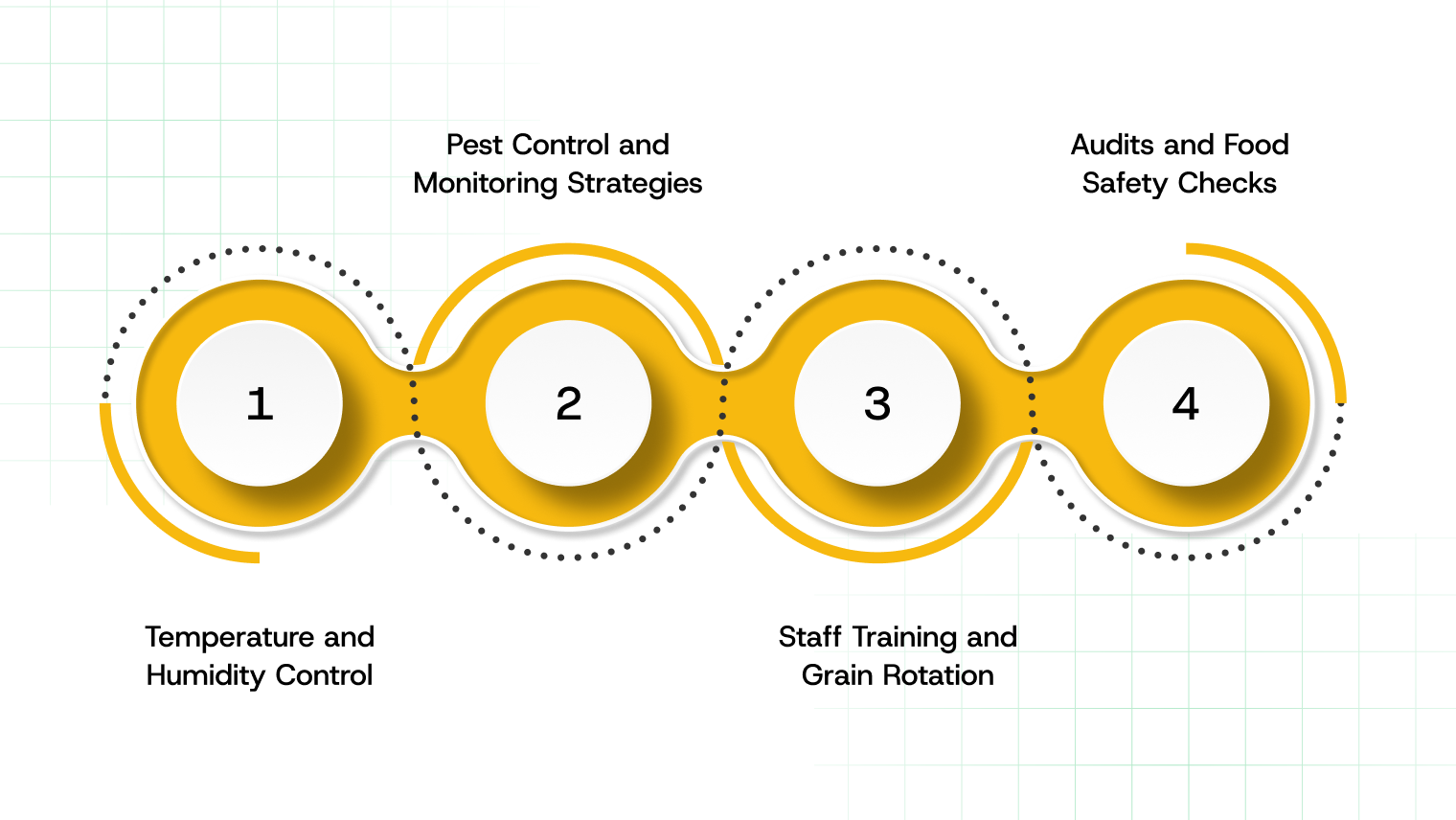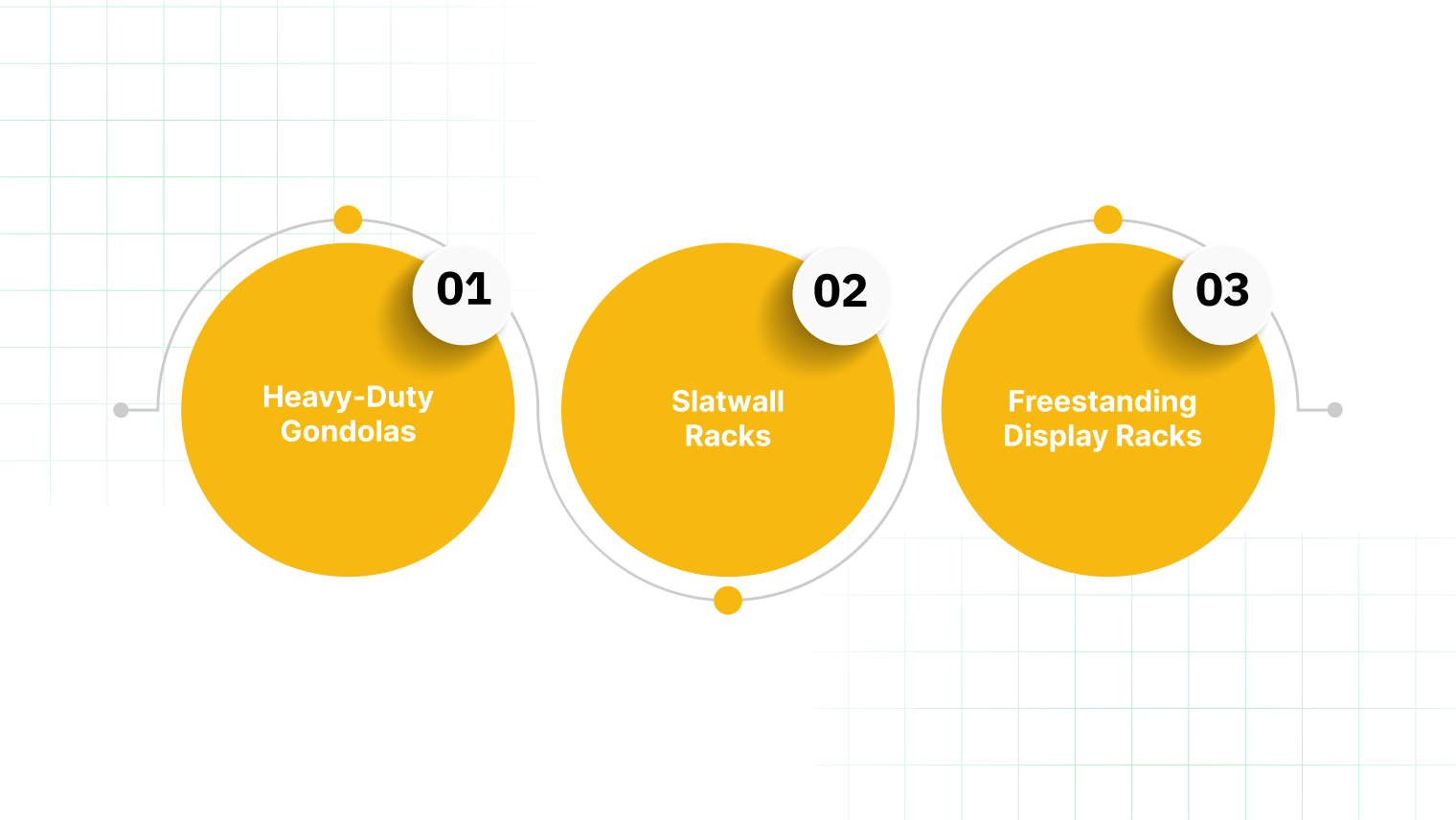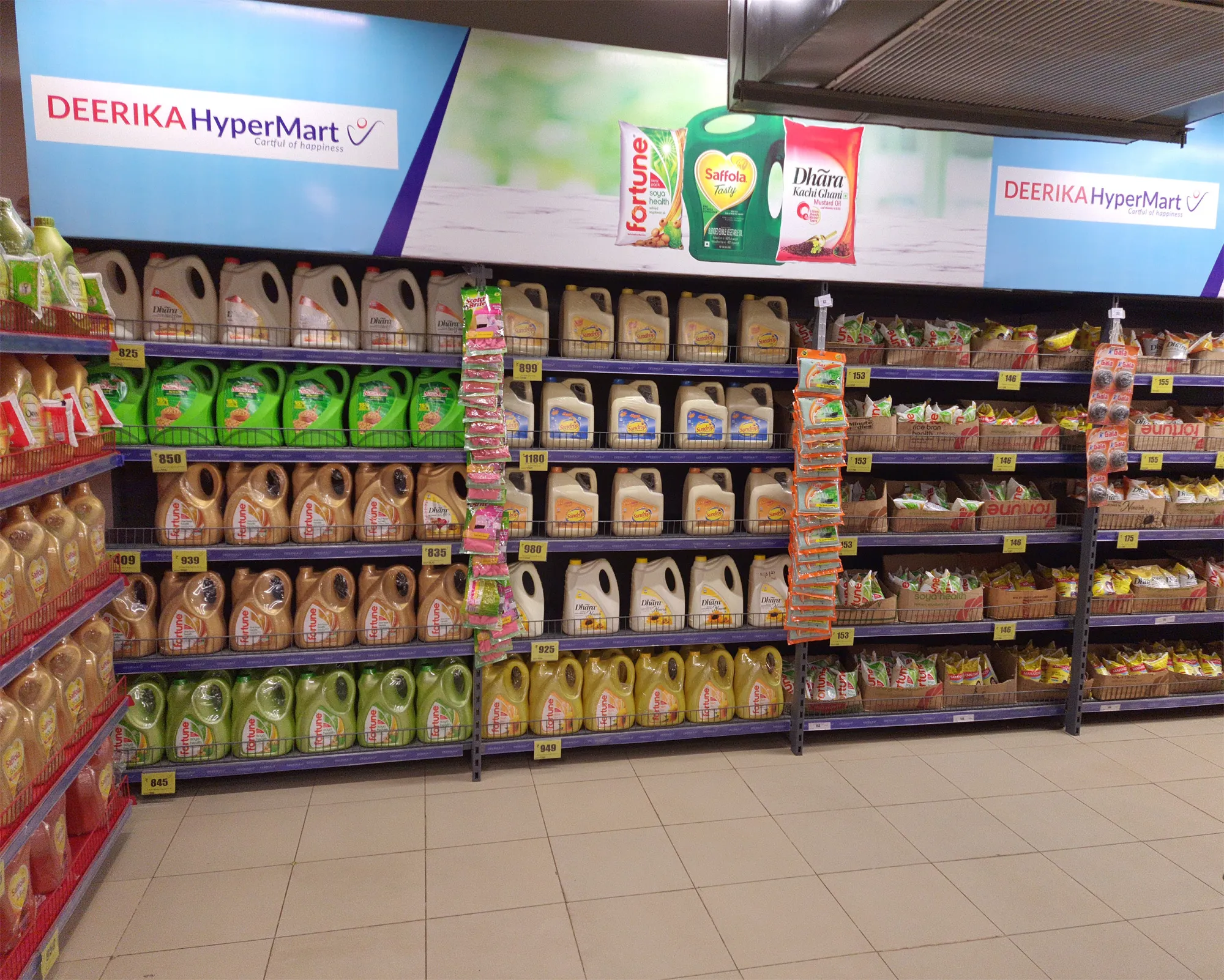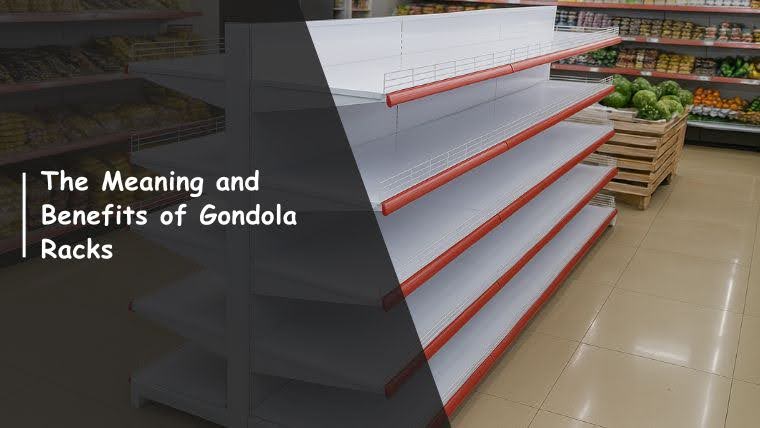Best Ways to Store Grain in Bulk for Hypermarkets
Discover the best grain storage ideas for hypermarkets. Maximise space and keep products fresh with these proven storage methods. Learn more and optimise today!

Discover the best grain storage ideas for hypermarkets. Maximise space and keep products fresh with these proven storage methods. Learn more and optimise today!

What if hypermarkets could stop watching grain quietly spoil, and start saving crores instead?
Grains lost before ever reaching a shelf can eat into profits and dent brand reputation, especially when nearly 8 lakh quintals of foodgrain have rotted in state warehouses, costing around ₹2,00 crore. Without fresh, scale-fit storage methods, that kind of loss could be quietly happening in your own stacks. By understanding practical, scaled-down, ready-to-use grain storage ideas for hypermarkets, ideas that not only cut spoilage but also keep things smooth from the storeroom to the floor.
Bulk grain storage is more than a backroom concern; it directly shapes sales, trust, and compliance in hypermarkets. India records food losses worth nearly ₹1.5 lakh crore every year, and weak storage remains a major reason behind it. Adopting reliable grain storage ideas for hypermarkets helps maintain freshness, improves inventory turnover, and ensures smooth alignment with food safety standards. When spoilage is reduced, fewer products go to waste, margins stay healthier, and profitability rises across the entire supply chain.
That being said, before picking the right storage system, a few key considerations are important to keep in mind.

Grain storage at hypermarket scale demands careful planning to prevent wastage, preserve quality, and meet regulatory requirements. Poor storage choices directly impact inventory turnover, food safety, and overall profitability, leading to unnecessary losses and compliance challenges.
Here are the important considerations you should prioritize before choosing reliable grain storage ideas for hypermarkets:
Understanding these essentials sets the foundation for selecting the best storage methods. Here's a look at the most effective solutions.
Also Read: Exploring Different Types of Pallet Racking – Advantages and Disadvantages
Protecting grain quality at scale calls for storage methods that reduce spoilage, meet safety rules, and protect margins. Poor choices erode freshness, slow turnover, and invite costs, so investing in the right system makes commercial sense.
Here are the most practical storage methods to guide your choice of grain storage ideas for hypermarkets:

Sealed bags like PICS or GrainPro stop moisture and pests from entering, keeping your grains longer in good condition. Here are the ways they support busy hypermarket stock rooms:

Using food-grade containers with Gamma-seal lids or oxygen absorbers helps large-scale storage stay dry and unspoiled. Here are the advantages they bring to your operations:

Aerated silos or dry bins maintain even temperatures and safe conditions for large grain volumes in hypermarket systems. Here are why they’re a strong fit:

Gravity dispensers combine storage and display, offering both convenience for shoppers and safe storage for you. Here follows why these work well in-store:

Using pallet racks from Expanda Stand brings durability, modular design, and high-density flow to your backroom storage. Here’s how they help hypermarkets manage bulk grain better:
Having the right storage system is only one part of the equation. The way you operate these systems plays an equally important role.
Also Read: How Hypermarket Racks are Revolutionizing Shopping Experiences
Maintaining grain quality in hypermarkets requires disciplined operations that balance freshness, safety, and efficiency at scale. Small lapses lead to spoilage, customer complaints, and financial loss, making structured best practices essential.
Here are the most important operational practices to keep your grain storage systems reliable and compliant:

1. Temperature and Humidity Control
Stable temperature and humidity ranges play a critical role in preserving grain quality and preventing unwanted spoilage. The best results come when grains are kept at 20–25°C with humidity below 60%. This balance stops mold growth, safeguards nutrients, and helps maintain customer trust in product freshness.
2. Pest Control and Monitoring Strategies
Uncontrolled pests quickly damage grains, lower their quality, and increase financial risk through wasted inventory. Preventive strategies like sealed bins, traps, and regular fumigation reduce infestation risk while keeping operations compliant. Monitoring programs backed by logs and digital sensors ensure early detection before minor issues grow costly.
3. Staff Training and Grain Rotation (FIFO)
Grain quality depends not only on storage systems but also on disciplined stock rotation practices. Staff training in FIFO ensures older grains move first, reducing waste and avoiding expired products reaching shelves. Clear signage and simple instructions make these rules easy to follow, even during high turnover periods.
4. Audits and Food Safety Checks
Frequent audits confirm that safety measures, storage conditions, and documentation stay aligned with food regulations. Internal reviews supported by third-party checks help identify gaps before they result in penalties or recalls. Consistent compliance builds consumer trust and protects your hypermarket’s reputation in competitive retail markets.
With the right operational practices in place, there's still the matter of how to display and integrate grain storage effectively on the sales floor.
Also read: Maximize Your Space with Electronic Showroom Display Racks

Hypermarkets often struggle to balance the need for safe grain storage with the demand for attractive bulk displays. A good solution is using storage systems that double as display units, helping grains remain fresh while improving accessibility for customers.
Here are some practical storage-display approaches that can fit directly into your hypermarket setup:
At the heart of all these strategies lies a clear takeaway: proper grain storage practices can help hypermarkets thrive in both the operational and customer experience domains.

Managing grain storage in hypermarkets is not just about preserving freshness; it’s also about maximizing space and ensuring a smooth customer experience. Expanda Stand specializes in high-quality retail display and storage systems that directly solve these challenges for hypermarkets.
Here’s how Expanda Stand can transform your operations:
Grain storage in hypermarkets is more than just a logistical task; it directly impacts freshness, compliance, and profitability. Proper systems ensure reduced spoilage, smoother operations, and a better shopping experience for your customers. By adopting reliable methods and practices, long-term efficiency and stronger margins become achievable.
Expanda Stand offers storage and display solutions designed to support these goals while fitting seamlessly into hypermarket operations. Explore their range today and discover how the right fixtures can enhance both efficiency and profitability.
Reach out to Expanda Stand now to design storage systems that work smarter for your hypermarket.
1. How long can grains be stored in bulk?
Grains can typically be stored for several months to a year, depending on the type of grain and storage conditions, such as temperature and humidity.
2. What is the best temperature for storing grains?
The ideal temperature for storing grains is between 50°F to 60°F (10°C to 15°C) to prevent spoilage and pest growth.
3. How do I prevent pests from infesting my grain storage?
Use airtight containers, regular inspections, and maintain clean storage areas. Pests can also be deterred with natural repellents or chemical treatments.
4. Are grain storage bags safe for long-term use?
Grain storage bags are suitable for short-term storage. For long-term storage, more durable solutions like silos or climate-controlled rooms are recommended.
5. What is the most cost-effective grain storage solution?
Bulk storage containers and grain storage bags are the most cost-effective options for hypermarkets, particularly for smaller operations.




Ready to Upgrade Your Process Operations?